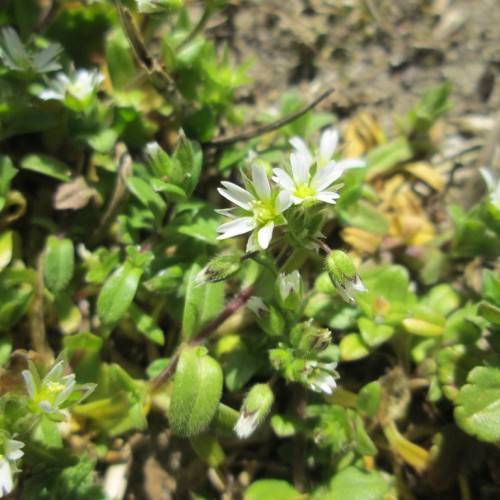
Five-Stamen Chickweed
Cerastium semidecandrum
Watering:
Minimal
Hardiness Zone:
Sun:
full sun,part shade
Leaf:
Yes
Growth Rate:
Low
Drought Tolerant:
Yes
Salt Tolerant:
Yes
Invasive:
Yes
Care Level:
Easy
watering
European Chickweed needs moderate amounts of water at regular intervals. Water the plant thoroughly once every 2-3 days or when the top 1 inch of soil feels dry. Make sure that the soil is well-drained so that the plant does not become waterlogged. If the temperatures are consistently high, increase watering slightly to keep the soil moist.
sunlight
European chickweed (Cerastium pumilum) is a species of plant that thrives in full sunshine. It requires at least 8-10 hours of direct sunlight per day during the growing season to remain healthy and bloom. As the weather warms up, exposure to direct sunlight is best for it in the mornings and evenings when the sun is low, to prevent it from wilting. During the peak of the summer, when temperatures are highest, it should be placed in a spot with partial shade in the middle of the day. During the winter, it should have full sunlight for at least 5-6 hours per day.
pruning
European Chickweed (Cerastium pumilum) should be pruned after it has finished flowering, usually during the summer months. Prune it down to just a few centimeters above the ground. This will lead to more compact growth and should be done every few years, depending on the desired look. If the plant has become leggy, prune it more often. Pruning European Chickweed will also encourage more flowering and help to maintain a healthy, balanced look.
